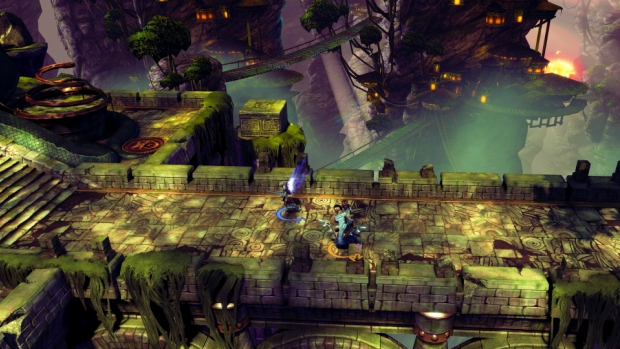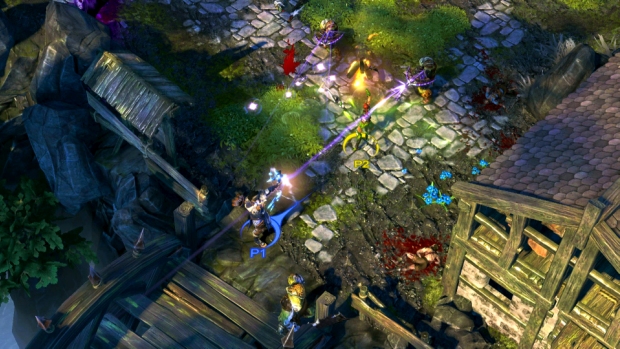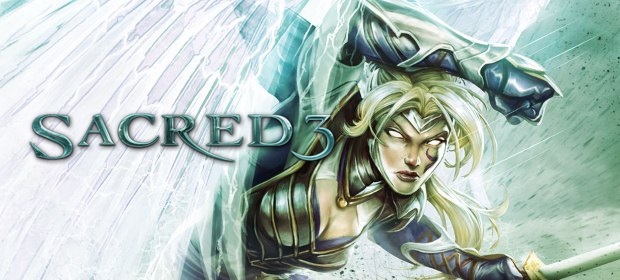2008’s Sacred 2: Fallen Angel was a fun but flawed action-RPG that attempted to borrow elements from Diablo and Dungeon Siege and transpose them into its own high fantasy world. Hampered by an interface designed for PC and crudely butchered to suit a gamepad, an open world that was a little too open and a general sense that the adventure was simply too big and too sprawling to maintain interest, it nevertheless delivered a fairly deep and addictive experience brimming with skills and loot and magic and hokum.
Fans of Ascaron’s lootathon – and indeed the genre as a whole – were expectedly excited at the announcement of Sacred 3, a direct sequel to Fallen Angel that would continue the story of Ancaria where the last game left off. However, those expecting a similarly deep and expansive experience will be disappointed. Sacred 3 is like an incredibly feature-light Diablo 3 clone. Little other than a button-mashing brawler, it just about manages to remain entertaining despite a frustrating lack of depth.

You enter Ancaria as one of four characters (or five if you get the day one assassin DLC): a warrior, a lancer, an archer, and a Seraphim (the iconic angelic class synonymous with the series). You can’t customise your character in any way, and there are no skill values to manage or abilities to choose from. You’re rudely plunged into the action and told that your quest is to stop an evil warlord called Zane from acquiring the legendary Heart of Ancaria because, well, reasons.
On the surface, the characters appear to be very different. In practice, however, there isn’t much between them. Hammering A delivers your attack, while B evades and X “bashes”, which breaks shields. You then have two special moves mapped to RB and LB, which can be swapped out as more talents are unlocked and upgraded. The skill trees aren’t overly imaginative, granting you several Light and Heavy abilities and then allowing you to upgrade them in various ways at the cost of gold. Likewise, your natural abilities like blocking and evading can also be upgraded and improved.
Quite distressingly for fans of the series, there is no random loot. In fact, there’s no loot at all besides resource refills and gold. Weapons are unlocked between missions as you increase in level, and your armour changes organically as you get stronger. There isn’t even much of a leap in quality between weapons, either, meaning you’ll often unlock a new sword or bow and find it’s more beneficial to stay as you are, which is rather disheartening.

Missions generally take the form of mass slaughters, either alone or with friends. You’re required to do little more than wade through jostling clusters of enemies, occasionally breaking a shield or stunning a caster, avoiding falling lava, cannonballs, boulders (a distressingly overused hazard), and various traps that will harm or stun you. Quite often, simply abusing the A button while hitting X whenever you see a white shield icon and spamming the shoulder bumpers will see you through. There were moments when I literally drifted off into a daydream during a fight only to refocus on a pile of dead bodies like some kind of mild-mannered Viking berserker.
The repetitive nature of the missions is not helped by one of the most irritating scripts I’ve seen or heard in a long time. Anachronistic slang is often forgivable, but relentless one-liners and awkwardly-delivered jokes are not. Your guide, Aria, is as annoying as any squeaky JRPG brat, constantly doling out turgid gags in a horribly modern American accent. Somehow, the Weapon Spirits manage to be even worse. These are equippable elements that confer a buff to the party and a debuff to the individual, or vice versa, and can be found throughout the world. They repeatedly comment on what you’re doing with the same looped lines, which is teeth-grinding enough – but nothing on Earth or in the Hells below will prepare you for the Weapon Spirit that sings everything, over and over and over again.
Somehow, despite a collection of mind-boggling design choices, there is something strangely playable about Sacred 3. Joining up with friends doesn’t so much change the game as make it more bearable, although, lofty claims aside, there is nothing tactical about any of the co-op. You simply mash buttons together until your weary, battered controllers cry out in unison against the inhuman abuse being visited upon them. I swear when I laid my pad down after an hour or so of playing, I could hear it quietly weeping into the couch cushions.

VERDICT: Sacred 3 is not an Action-RPG, although it wears the uniform. It’s an outright hack ‘n’ slash adventure game with a throwaway story, barely-developed characters, and a once-rich fantasy world now so washed-out it’s become almost nondescript. Quite valiantly, new developers Keen Games maintain a level of playability that just about carries it through, but rather unsurprisingly the sheer joy of bludgeoning wave after wave of cut-paste monsters to death for little or no reward begins to wear off after a few hours. Go into it ready to accept it for what it is, and you’ll find a harmless but deliberately dull hack ‘n’ slasher, but don’t expect anything as deep or interesting as what has gone before.

POOR. Games tagged 4/10 will be playable, perhaps even enjoyable, but will be let down by a slew of negative elements that undermine their quality and value. Best avoided by any but hardcore genre fans.
Review code provided by publisher.





